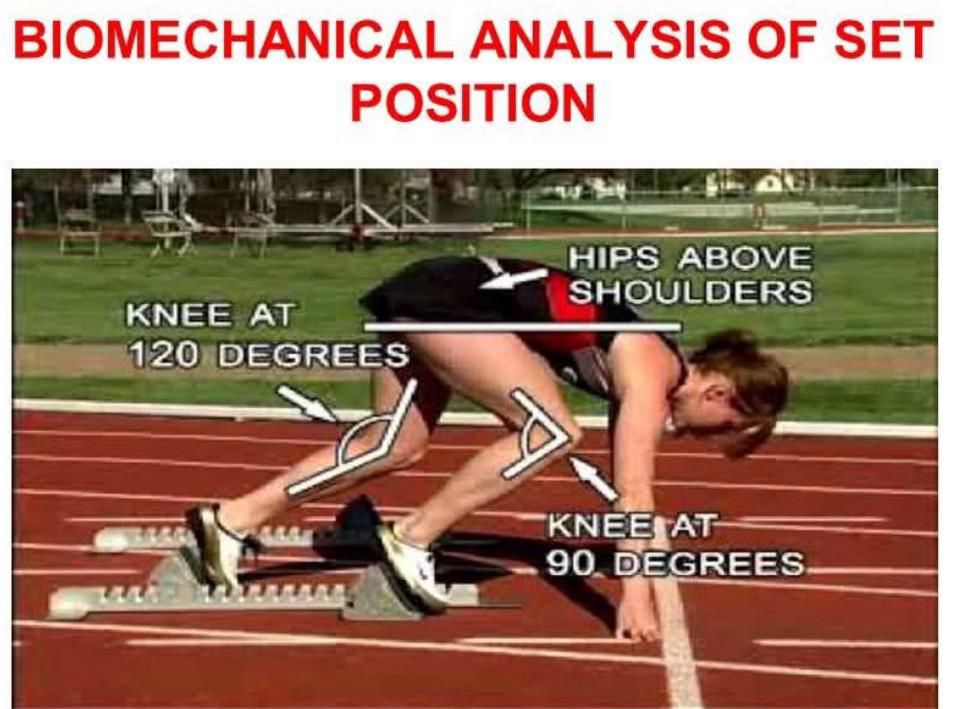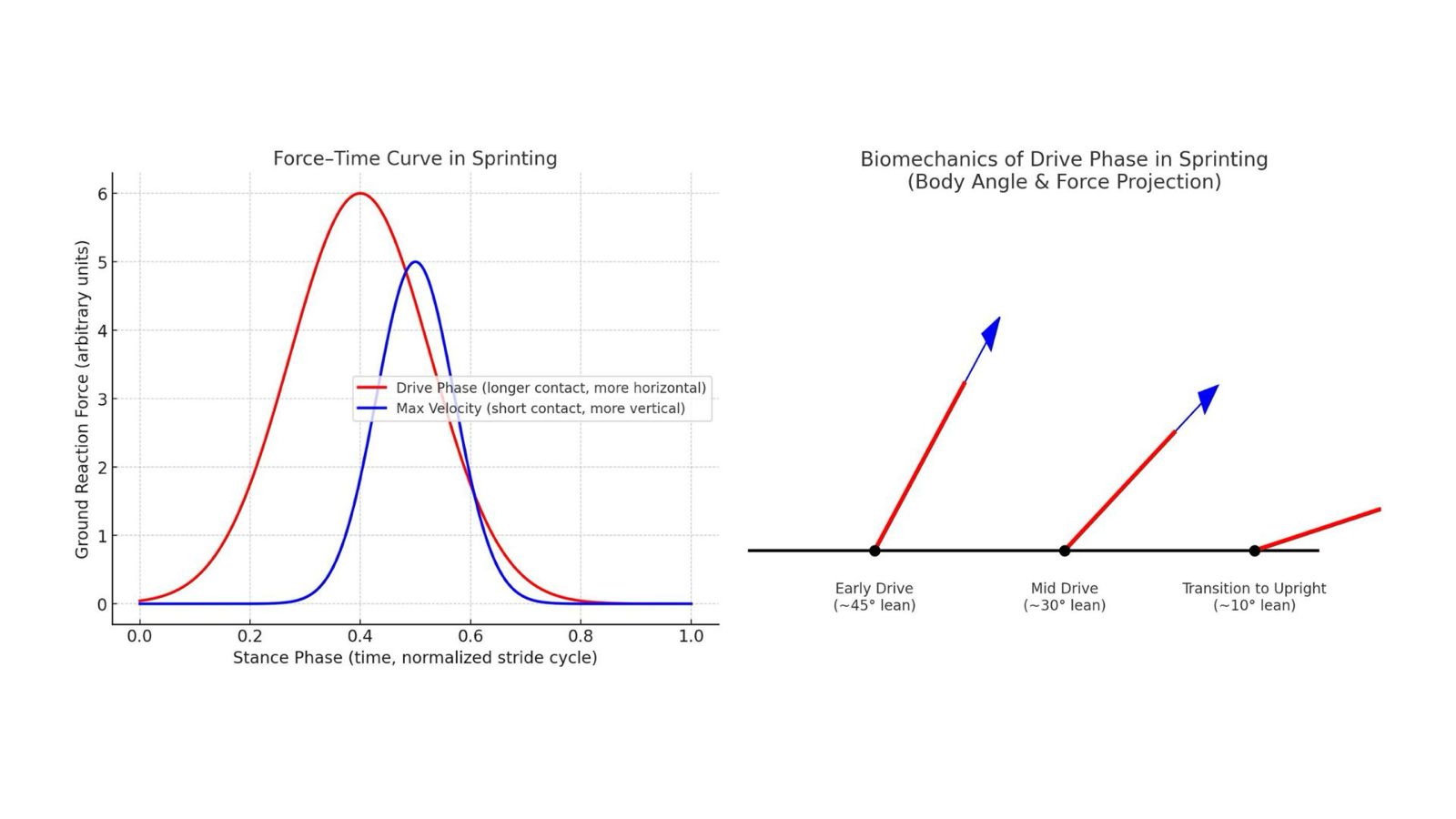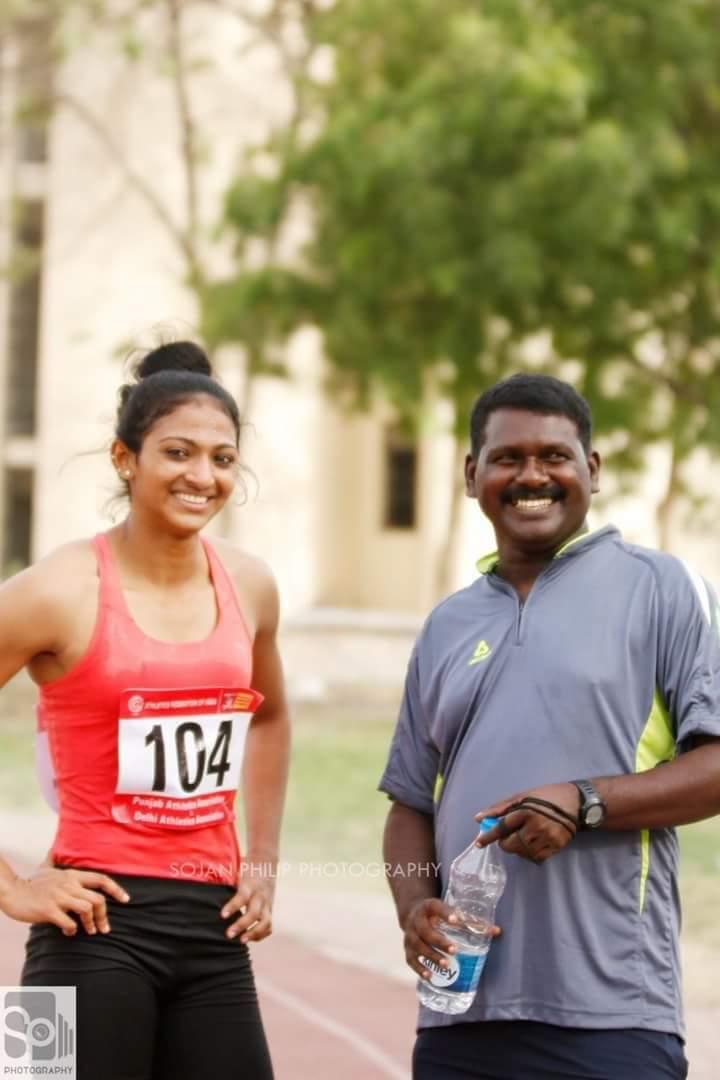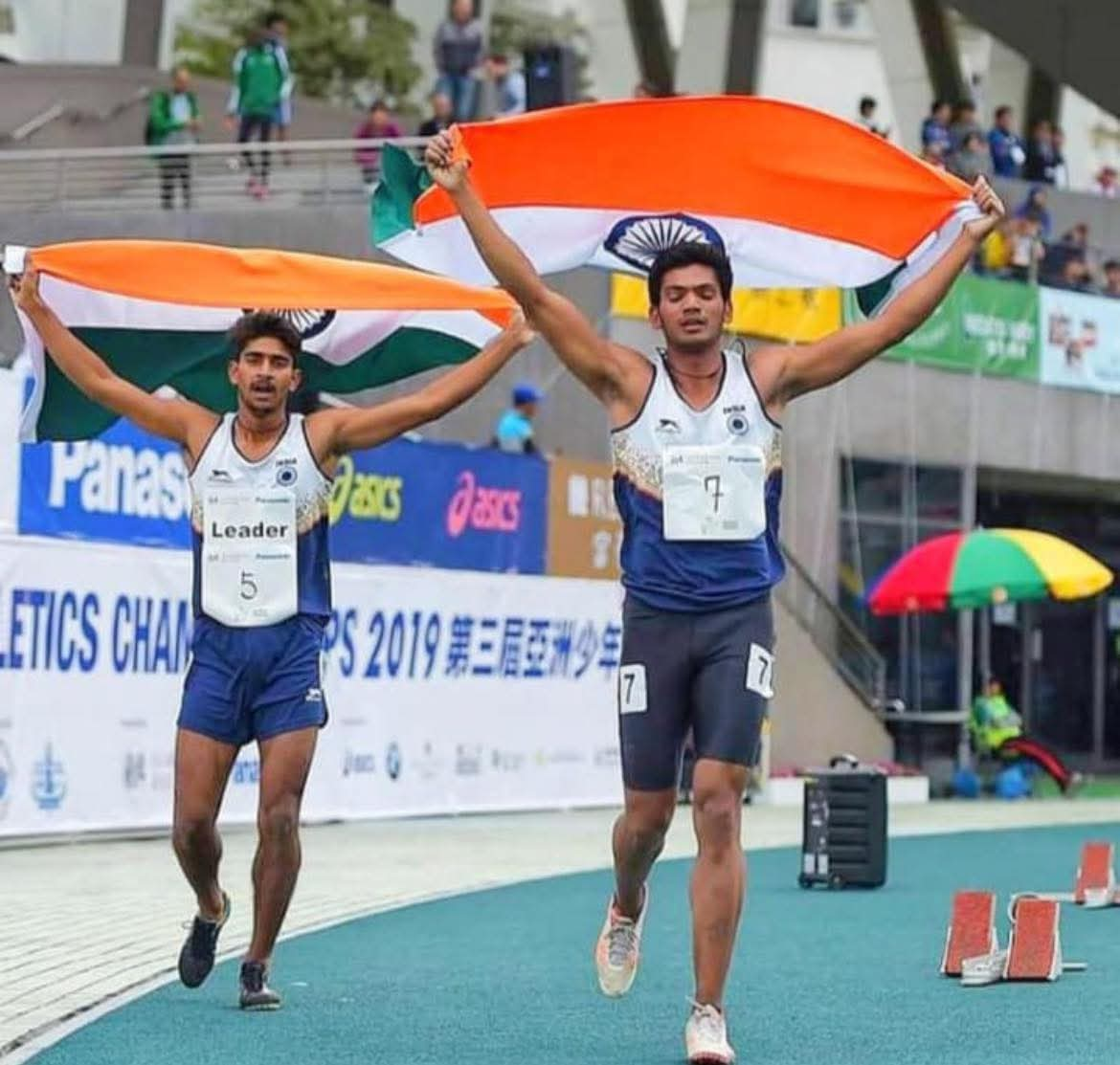Biomechanical Aspects of 100m Block Start
1. Initial Position
According to Baumann (1985), the most important considerations for the "On Your Marks" position are:
- The distance between the blocks
- The distance between the front block and the start line
- The horizontal and vertical distance of the centre of gravity from the start line
- The foot, knee, and hip-joint angle of both legs
- The angle of the trunk to the ground
2. "Set" Position
It is of fundamental importance that the athlete assumes a posture in the "Set" position which:
- Guarantees optimum leg angles for pushing off
- Positions the centre of gravity effectively
- Ensures muscular pre-tensing for explosive contraction
Block spacing is generally chosen independently of body type, but body size and leg length are key in determining the blocks' placement relative to the start line.
Main features of an optimum "Set" position:
- Even weight distribution
- Hip axis higher than shoulder axis
- Centre of gravity forward
- Knee angle of 90° in the front leg
- Knee angle of 120° in the rear leg
- Legs pressing into the blocks
3. Starting Action
The push-off phase is analysed using force pads in starting blocks, which record:
- Impulse strength
- Direction and duration of force
- Timing of push from each leg
Main features of an optimum starting action:
- Short and consistent reaction time
- Fast extension of both legs
- Combined acceleration from front and rear legs
- Sustained, high-force leg drive
- Start angle of 42-45° to the track
- Explosive extension using arms and swing leg with right-angled knee and arm
- Active forward drive of the rear knee for a quick, well-placed first step (just behind the centre of gravity), avoiding braking




